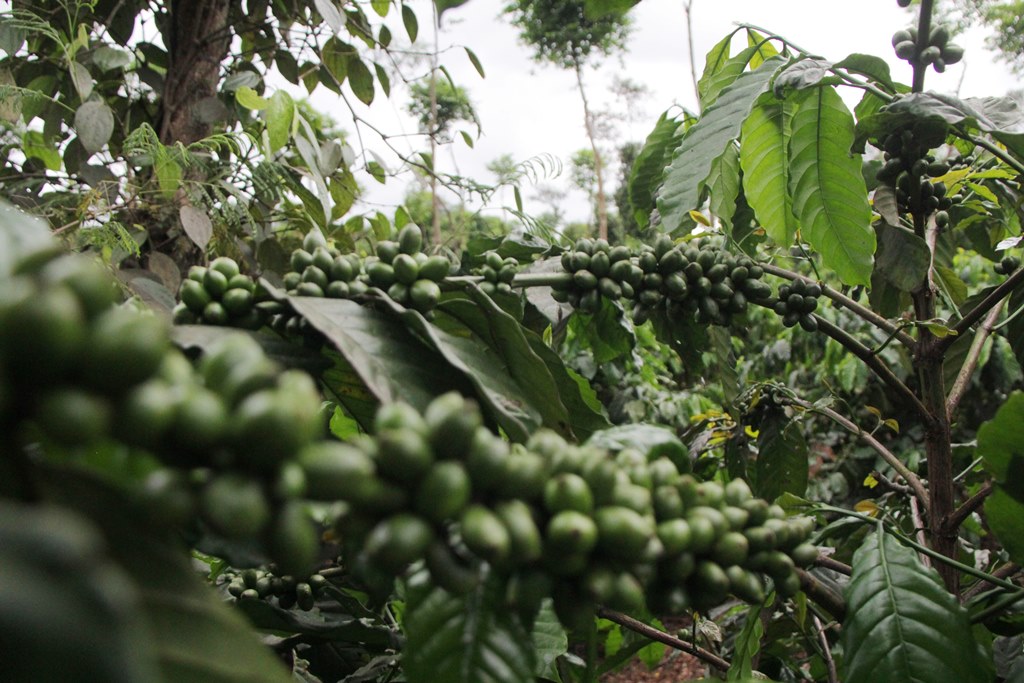
Vietnam has opportunities to increase exports to the big playground of the European Union (EU), especially agricultural, forestry and aquatic products. The coordination of the ministries and branches clearly shows their determination to support businesses to take advantage of export opportunities of this commodity group and effectively implement the Vietnam-EU Free Trade Agreement (EVFTA).
Reorganize production
The EVFTA Agreement will come into effect on August 1, to take the lead, Vietnamese agricultural enterprises are no longer at the potential and strength, but require quick change decisions to take advantage of every opportunity. .
This is the agreement with the highest level of commitment for Vietnam among the signed FTAs, with more than 99% of import tariff lines between the two sides being eliminated in a 7-10 year roadmap; in which, many agricultural products of our country have strengths in production and export such as rice, seafood, coffee, cocoa … which are cut immediately or in short-term.

Vietnamese coffee needs to improve its quality to meet the requirements of EU consumers. (Photo: LS).
Minister of Agriculture and Rural Development (MARD) Nguyen Xuan Cuong acknowledged that Vietnam’s agriculture, forestry and fisheries need to meet strict requirements to enter the big market.
EU is still the market with high technical barriers on animal and plant quarantine; quality control, food safety and hygiene; combating illegal, undeclared and unregulated fishing (IUU); declaration of legal timber origin; environmental sustainability standards …
Currently, rice, coffee, cashew nuts, seafood, wooden products … will have a great opportunity to increase market share in this fastidious market.
However, with rice exports, the biggest challenges are product quality, corporate reputation, environmental protection standards and the majority of quotas for specialty rice varieties.
For seafood, “overcoming the yellow card” and facing “heavy” competitors in Thailand and India are the biggest challenges. As for coffee, the quality is not high, while this is the condition that EU consumers focus on.
According to the Minister of Industry and Trade Tran Tuan Anh, the issue of negotiation on animal and plant quarantine is still a problem for countries when opening markets for agricultural and aquatic goods.
Agriculture needs to reorganize production to ensure high-quality, high-value added goods, increased supervision from production to processing, post-harvest preservation, traceability and sanitation. food safety, to engage more deeply in global supply chains.
Open the EU “door”
Experience of Vietnam while participating in many FTAs shows that the market for agricultural, forestry and fishery products has been expanded. Ho Chi Minh City is a province with a high export turnover to the EU.
Mr. Nguyen Thanh Phong, Chairman of the City People’s Committee, assessed that exports to the EU market accounted for about 10% of the city’s total export turnover.
In order to support businesses, the city is focusing on developing export development plan to 2025, orientation to 2030 in the direction of shifting to export support services; restructure the export industry towards making refined goods with scientific content and high added value, such as software, digital products, high-tech agricultural products; At the same time, developing logistics to meet international standards.
Regarding production organization, Mr. Nguyen Quoc Toan, Director of the Department of Processing and Market Development of Agriculture, Forestry and Fisheries (Ministry of Agriculture and Rural Development) said that the Ministry will coordinate and support localities to promote the development of regional codes planting, geographical indications, ensuring traceability, quality and food safety; encourage enterprises to invest in deep processing to increase the added value of exported products.
The Agriculture sector will also formulate two strategies to develop agro-forestry and fishery export markets into the EU and attract FDI from the EU into Vietnamese agriculture, in order to link Vietnam’s agriculture to global agricultural value chains. , making the best use of the two sides’ advantages in trade and investment relations.
The implementation of the EVFTA Agreement does not reduce the set standards, it is even more strictly controlled and the sanctions for violations are also heavier. Therefore, from the Ministry of Industry and Trade, Minister Tran Tuan Anh pledged to focus on disseminating technical regulations and barriers in the agro-forestry and fishery trade of the EU market to the people and businesses.
Only one more month before the door of EVFTA will open. Right now, businesses from production to exports of agriculture, forestry and fisheries are all ready for a large market behind that door with the full support of local authorities, ministries and branches.
Box: EVFTA Agreement takes effect, creating favorable conditions for Vietnam’s agriculture, forestry and fisheries to access potential markets, with a population of over 500 million people and a GDP of US $ 15,000 billion. Within ASEAN, Vietnam is the largest exporter of goods to the EU and will receive many benefits from EVFTA compared to other trade agreements that have been joined.
Vietnamese goods to this market currently account for only about 2% of total EU imports.
